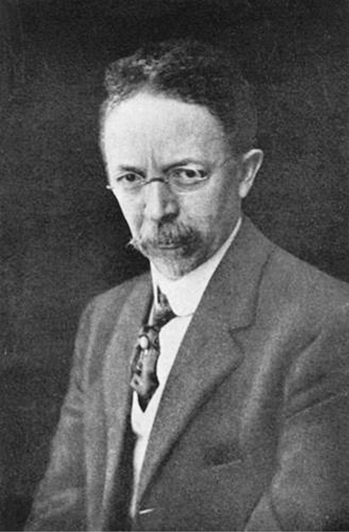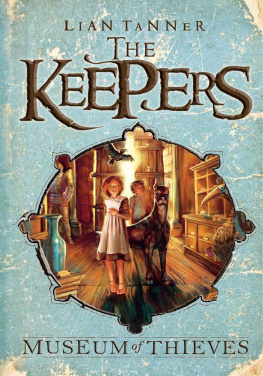Henry Ossawa Tanner: Art, Faith, Race, and Legacy
Over the past 40 years, renewed interest in the career of Henry Ossawa Tanner (18591937) has vaulted him into expanding scholarly discourse on American art. Consequently, he has emerged as the most studied and recognized representative of African American art during the nineteenth century. In fact, Tanner, in the spirit of political correctness and racial inclusiveness, has gained a prominent place in recent textbooks on mainstream American art and his painting The Banjo Lesson (1893), has become an iconic symbol of black creativity. In addition, Tanner achieved national recognition when the Philadelphia Museum of Art in 1991 and the Pennsylvania Academy of the Fine Arts in 2012 celebrated him with major retrospectives. The latter exhibition brought in a record number of viewers. While Tanner lived a relatively simple life where his faith and family dictated many of the choices he made daily, his emergence as a prominent black artist in the late nineteenth century often thrust him openly into coping with the social complexities inherent with Americas great racial divide. In order to fully appreciate how he negotiated prevailing prejudices to find success, this book places him in the context of a uniquely talented black man experiencing the demands and rewards of nineteenth-century high art and culture. By careful examination on multiple levels previously not detailed, this book adds greatly to existing Tanner scholarship and provides readers with a more complete, richly deserved portrait of this preeminent American master.
Naurice Frank Woods, Jr. is currently an Assistant Professor of African American Studies at the University of North Carolina at Greensboro. He is the former program head and has published recently in Nineteenth-Century Art Worldwide, American Art, and the Journal of Black Masculinity.
Routledge Research in Art and Race
Routledge Research in Art and Race is a new series focusing on race as examined by scholars working in the fields of art history and visual studies. Proposals for monographs and edited collections on this topic are welcomed.
Henry Ossawa Tanner
Art, Faith, Race, and Legacy
Naurice Frank Woods, Jr.
Henry Ossawa Tanner
Art, Faith, Race, and Legacy
Naurice Frank Woods, Jr.

First published 2018
by Routledge
711 Third Avenue, New York, NY 10017
and by Routledge
2 Park Square, Milton Park, Abingdon, Oxon OX14 4RN
Routledge is an imprint of the Taylor & Francis Group, an informa business
2018 Taylor & Francis
The right of Naurice Frank Woods, Jr. to be identified as author of this work has been asserted by him/her in accordance with sections 77 and 78 of the Copyright, Designs and Patents Act 1988.
All rights reserved. No part of this book may be reprinted or reproduced or utilised in any form or by any electronic, mechanical, or other means, now known or hereafter invented, including photocopying and recording, or in any information storage or retrieval system, without permission in writing from the publishers.
Trademark notice: Product or corporate names may be trademarks or registered trademarks, and are used only for identification and explanation without intent to infringe.
Library of Congress Cataloging in Publication Data
A catalog record for this book has been requested
ISBN: 978-1-138-24194-7 (hbk)
ISBN: 978-1-315-27949-7 (ebk)
Typeset in Sabon
by Out of House Publishing
This book is dedicated to Cameron and Aiden and my Tanner cousins, Jason, Roxann, Justin, and Jenna.
Contents
Bringing Tanner into the Twenty-First Century
In June 1859, Benjamin Tucker Tanner and Sarah Miller Tanner were celebrating the birth of their son Henry. In choosing his middle name, they commemorated the abolitionist action taken by John Brown in 1856 at Osawatomie, Kansas. Henry Ossawa Tanner was named as an act of love and defiance, in the hope that American slavery would end and he would grow up in a freer world. From his birth, Henry was marked with the spiritual foundation of the AME Church and his parents commitment to the race. His name itself ties him to the struggle. As a child, Henry was raised to see past the limits that Americas view of race set for his community. He saw himself as an artist, and with perseverance and his familys support he transformed his dream into reality.
This was his nineteenth-century foundation and on it, he built the skills to fulfill his artistic inspiration. He was trained at the Pennsylvania Academy of the Fine Arts and continued his studies in Europe at the Acadmie Julian. The work that he produced was always framed in spiritual uplift and the struggle of his people. By the twentieth century, Tanner had established himself in the art world as an important figure and he was widely considered the preeminent African American artist. Much of his success was achieved on the world stage in Paris. He was on a path to success that was not fully open to him at home. Still he maintained his American contacts and even mentored a number of African American artists of the next generations including William Edouard Scott, William Harper, and Hale Woodruff.
Tanner had assured his place in history with the creation of The Banjo Lesson, but he had moved to make spiritual and religious scenes the focus of his work. This shift disappointed many in the black community who felt there was a need for positive images of blacks. Tanner was depicting the stories that his father had preached. After a period of being seen as a significant but perhaps out of style artist, a reassessment of his work began to take shape in the 1960s. This resurrection of his status was built on catalogued shows at Spellman College and the Smithsonian, and the 1991 show at the Philadelphia Museum of Art.
Now in the twenty-first century, there is again a need for Tanner and a need for a deeper understanding of his life and the significance of his art. We all need to understand the sources of his courage, strength, and perseverance that allowed him to achieve beyond all expectations. The 2012 traveling show organized by the Pennsylvania Academy of the Fine Arts introduced Tanners work to a new generation. With this biography, N. Frank Woods offers us the opportunity for a new, richer and deeper understanding of Tanners life and the worlds in which he lived. Woods has spent decades exploring the record and has unearthed a fuller picture of a man who was shaped by the nineteenth century, influenced the twentieth, and has much to offer us in the twenty-first.
Lewis Tanner Moore 2016
In 1897, Henry Ossawa Tanner (18591937) (

As an African American working in the age of Jim Crow, such recognition exacted a high price socially, economically, and emotionally. Despite his lifelong crusade to have his audiences see him as simply an American painter based on his national character, matters of race proved inescapable and central to his life and career. Tanner wanted his talent to take precedence, not to deny his racial identity, but rather to serve as testimony to the possibility that art might transcend the injustices and humiliations of racial prejudice. Furthermore, he desired strongly to attain critical acclaim without racial qualifiers that allowed some to judge him as merely an anomaly. And as long as many in the dominant culture continually regarded him principally as a Negro or colored painter, a stigma of inferiority inevitably attached.










